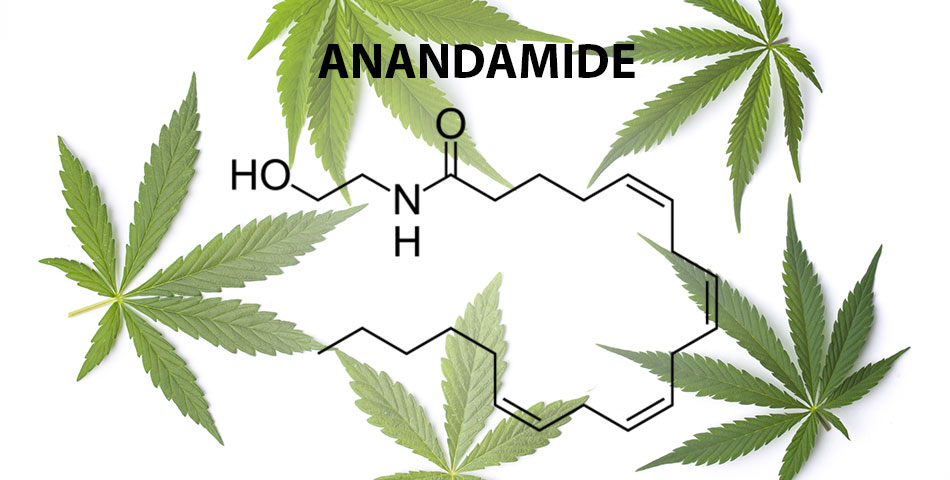Happiness.
It’s a term that’s overused, yet misunderstood. And even more unhappily, real happiness just isn’t all that common.
Why not? Many have pondered this question, and science is finally learning that much of the basis for happiness is biological. All of us have been dealt a certain set of cards in life—i.e., genetics—and all of us have the freedom to choose how to play these cards— i.e., epigenetics. Both factors have tangible impacts on how naturally happy we are.
Another thing science has learned: the health of one’s endocannabinoid system seems to correlate well with the state of their mind. More specifically, people whose bodies produce plenty of an endocannabinoid called anandamide seem to be happier than those who do not.
The implications of this discovery are huge. That’s because anandamide levels can be raised safely, quickly, and effectively. Ergo, happiness just might be attainable by us all.
This article will take a close look at actionable ways you can encourage your body to produce more anandamide—and reach a new mental baseline in the process. But first, a little more context might be needed. Here’s an outline of what you can expect.
What Is the Endocannabinoid System?
There are already plenty of technical explanations of the Endocannabinoid System out there, so we’ll keep this one simple. Sometimes one can miss the forest for the trees, as that old saying goes . . .
Essentially, the endocannabinoid system (ECS) acts like our body’s internet. It’s a complex web of molecular entities that produce, send, receive, and break down messages. Anandamide is one of the many neurotransmitters within this system that sends messages.
The endocannabinoid system is spread throughout virtually every part of the body and mind, and indeed, its presence is felt everywhere, too. Without our endocannabinoid systems we literally couldn’t survive.
What Does the Endocannabinoid System Do?
The ECS helps us maintain homeostasis, or full-body balance. It keeps all other biological systems in communication with each other, participating in what scientists call “cross-talk” with the immune system, endocrine system, cardiovascular system, and more.
An important note about homeostasis: for us humans, staying in homeostasis does not equate to staying in balance with our environment. Just imagine if our body temperature rose and fell with the weather, or if our bodies didn’t actively fight off environmental pathogens.
What homeostasis really refers to is an inner balance so efficient that we can thermodynamically—and literally—rise above external forces. The endocannabinoid system helps with this, which basically means it’s part of what makes us human.
What Is Anandamide?

Anandamide is one of the body’s most important endocannabinoids (eCB’s). Like virtually all other eCB’s, it helps send messages; it’s essentially a neurotransmitter.
Anandamide was discovered by a chemist named Lumír Hanuš in 1992. Together with other members of his Israel-based research team, Lumír named the compound after the Sanskrit word for bliss, Ananda.
This discovery, like so many others in its field, had huge implications. Prior to it, scientists didn’t really have a full grasp on why cannabis affected mood . . . but after it, the puzzle began to come together. Cannabis and its compounds worked in part by mimicking anandamide’s existing function.
Interestingly enough, anandamide is made of essential fats belonging to the omega-6 family. That means it’s able to be produced by stressed-out cells whenever the need arises. All a cell has to do is push some fatty acids out of its membrane, recruit some synthesis enzymes, and viola!—anandamide. Anandamide is also transient: though the body makes a vast amount of it, individual molecules don’t stick around for long.
What Does Anandamide Do?
Anandamide responds directly to many varieties of cellular stress. By facilitating communication between cells in times of need, it seems to help regulate other neurotransmitters like serotonin and GABA. These actions explain why it can have such a huge impact on happiness.
What does anandamide feel like, you might ask? If you’ve ever had runner’s high . . . that’s what. Seriously! Runner’s high was once thought to be caused by endorphins, but better research has identified eCB’s like anandamide as the culprit. It’s called the bliss molecule for a reason.
Summary: Much like good communication within one’s circle of family or friends uplifts everyone, the cellular communication anandamide facilitates has tangible impacts on one’s wellbeing and mood.
Why Anandamide Is so Important in Real Life
Speaking of family and friends, chances are you’re close to at least one person who just seems naturally happy. Whenever you see them, they’re upbeat; the type of struggles that stress out most people just don’t seem to register with them. Seems almost unfair, right?
A fascinating 2016 study correlated one’s baseline happiness with a FAAH-related gene mutation that actually reduces the chemical breakdown of anandamide. More on FAAH later, but for now, the verdict is clear: anandamide is that important.
Granted, this study analyzed nations, not people in labs, en route to making its conclusions, so its trends are definitely corollary, not causal, for now.
But its findings still make one thing clear: there’s no need to be jealous of that upbeat friend of yours. Genetics are only part of the equation, which means there’s something all of us less-than-blissful people out there can do. By understanding how anandamide production works, you can raise your own levels epigenetically.
Let’s take a closer look.
Metabolism of the Endocannabinoid Anandamide
The synthesis of anandamide starts off with an omega-6 fatty acid called arachidonic acid, or AA for short. Our bodies produce all sorts of neurotransmitters from this essential fat, including most endocannabinoids. And while we can’t produce AA itself, we can and do store it.
From there, stored arachidonic acid creates a group of precursors called N-arachidonoyl phosphatidylethanolamines (NArPE’s). Special enzymes then help bend and shape these NArPE’s into the final product: N-arachidonoylethanolamine (AEA), or anandamide.
Anandamide’s special chemical structure means it can bind to both CB1 receptors (like THC) and CB2 receptors (like CBD) with ease, though it doesn’t activate either of them strongly enough to be overwhelming.
And as we hinted earlier, anandamide’s life cycle is short: it’s produced in postsynaptic cells, cleaved away from the surface of the cell membrane, sent ‘backward’ across the synapse, and then used to activate the intended receptors. Once anandamide has delivered its messages, it’s done its job, and enzymes like FAAH began to break it down. Then the cycle repeats itself all over again.
How to Boost Your Body’s Anandamide Levels Naturally

Based on how anandamide works, there are a few viable ways to boost its levels—and become happier in the process. Here are some good places to start:
Take cannabinoids regularly. Both CBD and THC have been shown to boost anandamide levels, although they do so in slightly different ways. CBD may reduce FAAH’s activity, thus letting anandamide stick around for longer and build up in one’s system. Imagine that: you can replicate the genetic predisposition of that always-happy friend just by taking some CBD!
Opt for cannabimimetics—things that mimic the effects of cannabis. Exercise, as briefly mentioned earlier, is a type of “good stress” that raises baseline anandamide levels. By getting enough exercise, you may be setting yourself up to be happier . . . and indeed, that’s exactly what the science shows. Acupuncture, massage therapy, yoga, and even cold exposure (cryotherapy) may also be cannabimimetics.
Eat more healthy fats, especially omega 3’s from seafood. While most eCB’s are made from omega 6’s, eating more omega-6 fats actually isn’t the best idea. Though it may boost anandamide in the short-term, such a diet can desensitize the very endocannabinoid receptors that anandamide activates. Besides, some endocannabinoids are made from omega 3’s, too.
Looking to the Future
Once your body begins to produce more anandamide, all sorts of good things happen. Many studies, particularly this one from 2015, confirm that anandamide boosts mood and reduces fear.
It’s almost like a whole new world opens up: As Dr. Bob Melamede explains, anandamide may help shift a person’s focus towards the future and away from the past. So, if you’re ready to set yourself up for increased happiness, consider showing your body’s endocannabinoid system some love. Especially the anandamide that makes it tick.
To Your Health,
Green Maiden




